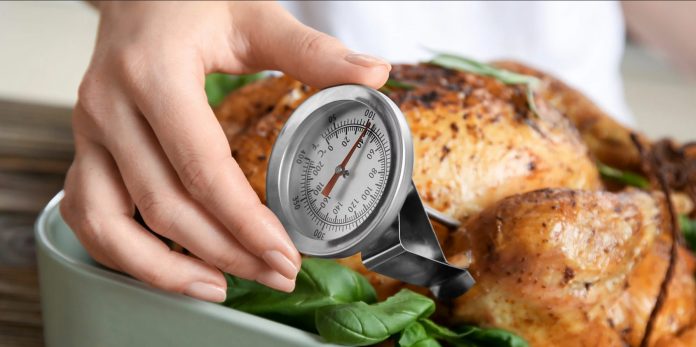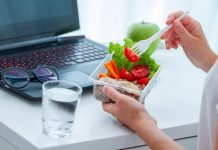Washing hands
One of the main ways that germs are spread is from hands. Harmful bacteria can be spread very easily from your hands to food, work surfaces and equipment.
It’s important to wash them thoroughly with soap and warm water before handling food, and especially after touching raw food, the bin, pets, and going to the toilet.
Storing and preparing meat
Raw meat, including poultry, can contain harmful bacteria that can spread easily to anything it touches, including food, worktops, tables, chopping boards, and knives.
Take particular care to keep raw food separate from ready-to-eat foods such as bread, salad and fruit. These foods will not be cooked before you eat them, so any germs that get on to them will not be killed.
Find out why you should never wash raw chicken.
To ensure good food hygiene always:
- use different chopping boards for raw and ready-to-eat foods
- store raw meat and fish in a sealed container on the bottom shelf of the fridge
Cooking
Cooking food at the right temperature will kill any harmful bacteria. Check that food’s steaming hot throughout before you eat it.
These foods need to be cooked thoroughly before eating:
- poultry
- pork
- offal, including liver
- burgers
- sausages
- rolled joints of meat
- kebabs
- Burgers and sausages
When cooking burgers, sausages, chicken and pork, cut into the middle to check that the meat’s no longer pink, the juices run clear and it’s steaming hot throughout.
Chicken
When cooking a whole chicken or bird, pierce the thickest part of the leg (between the drumstick and the thigh) to check there’s no pink meat and the juices are no longer pink or red.
Pork
Pork joints and rolled joints should not be eaten pink or rare. To check when these types of joint are ready to eat, put a skewer into the centre of the meat and check there’s no pink meat and the juices run clear.
Beef and lamb
It’s safe to serve steak and other whole cuts of beef and lamb rare (not cooked in the middle) or blue (seared on the outside) as long as they have been properly sealed by cooking them quickly at a high temperature on the outside only. Bacteria is usually only found on the outer surfaces of these types of meat.
Cooking meat on a barbecue
The safest option is to fully cook food in your oven and then put the cooked food on the barbecue for a short time so the flavour can develop.
This can be an easier option if you’re cooking for a lot of people at the same time.
If you’re only cooking on the barbecue, the 2 main risk factors are:
- undercooking meat
- spreading germs from raw or undercooked meat on to food that’s ready to eat
When you’re cooking most types of meat on a barbecue, such as poultry (chicken and turkey, for example), pork, burgers or sausages, make sure:
- the coals are glowing red with a powdery grey surface before you start cooking, as this means they’re hot enough
- frozen meat is fully defrosted before you cook it
- you turn the meat regularly and move it around the barbecue to cook it evenly
Most types of meat are safe to eat only when:
- the meat’s steaming hot throughout
- there’s no pink meat visible when you cut into the thickest part
- any juices run clear
Cooking with disposable barbecues can take longer.
Meat, such as steaks and joints of beef or lamb, can be served rare (not cooked in the middle) as long as the outside has been properly cooked. This will kill any bacteria on the outside of the meat.
Food made from any type of minced meat, such as pork sausages and beef burgers, must be cooked thoroughly all the way through.






























